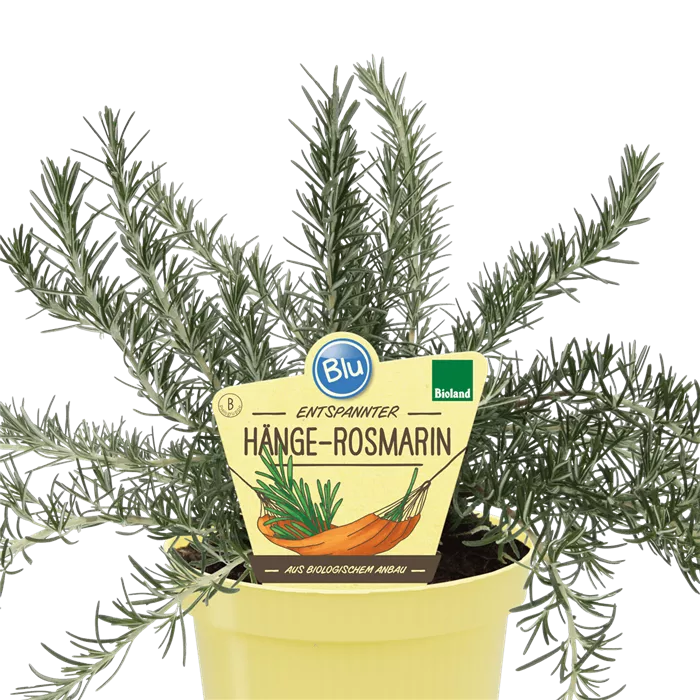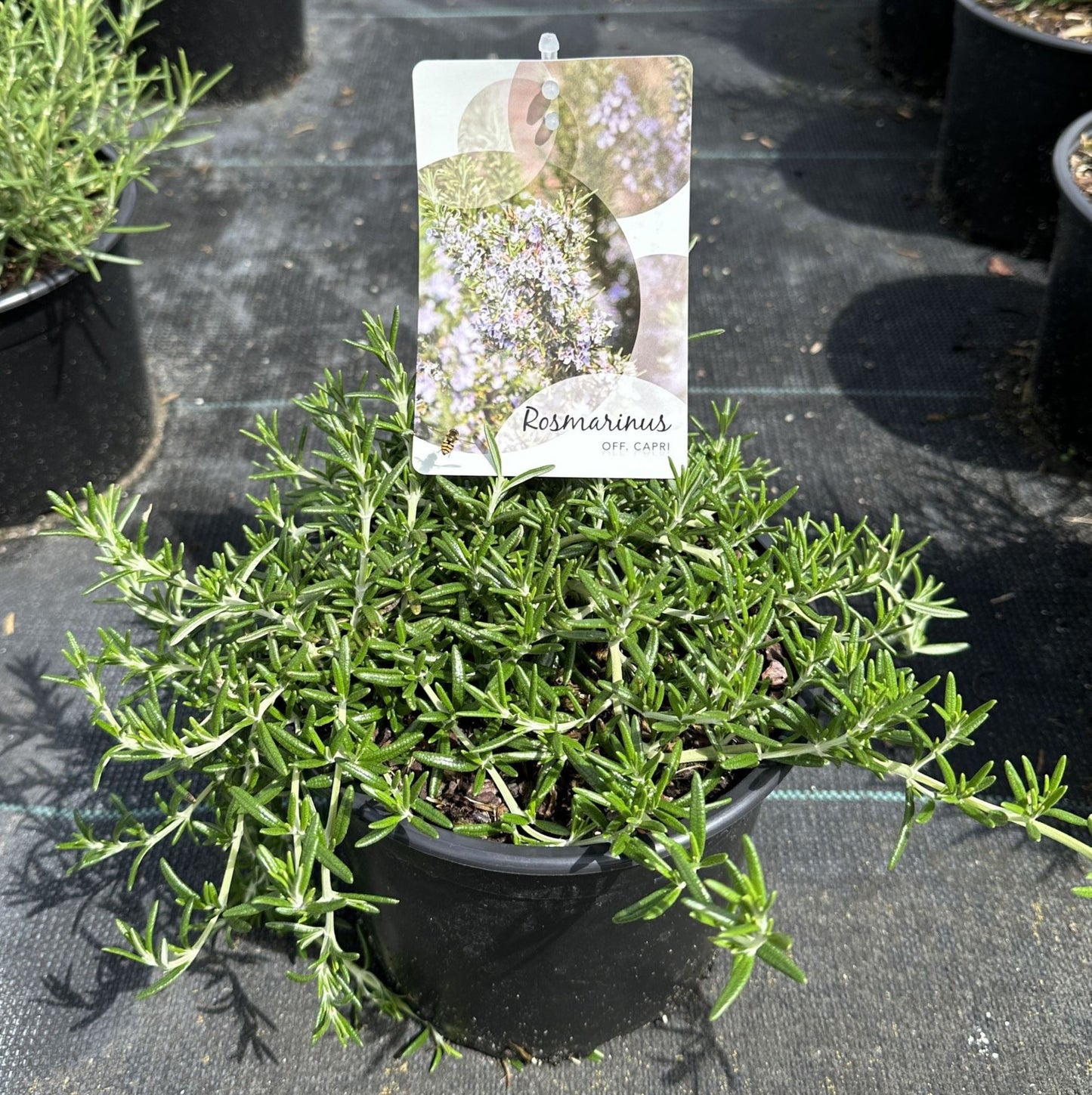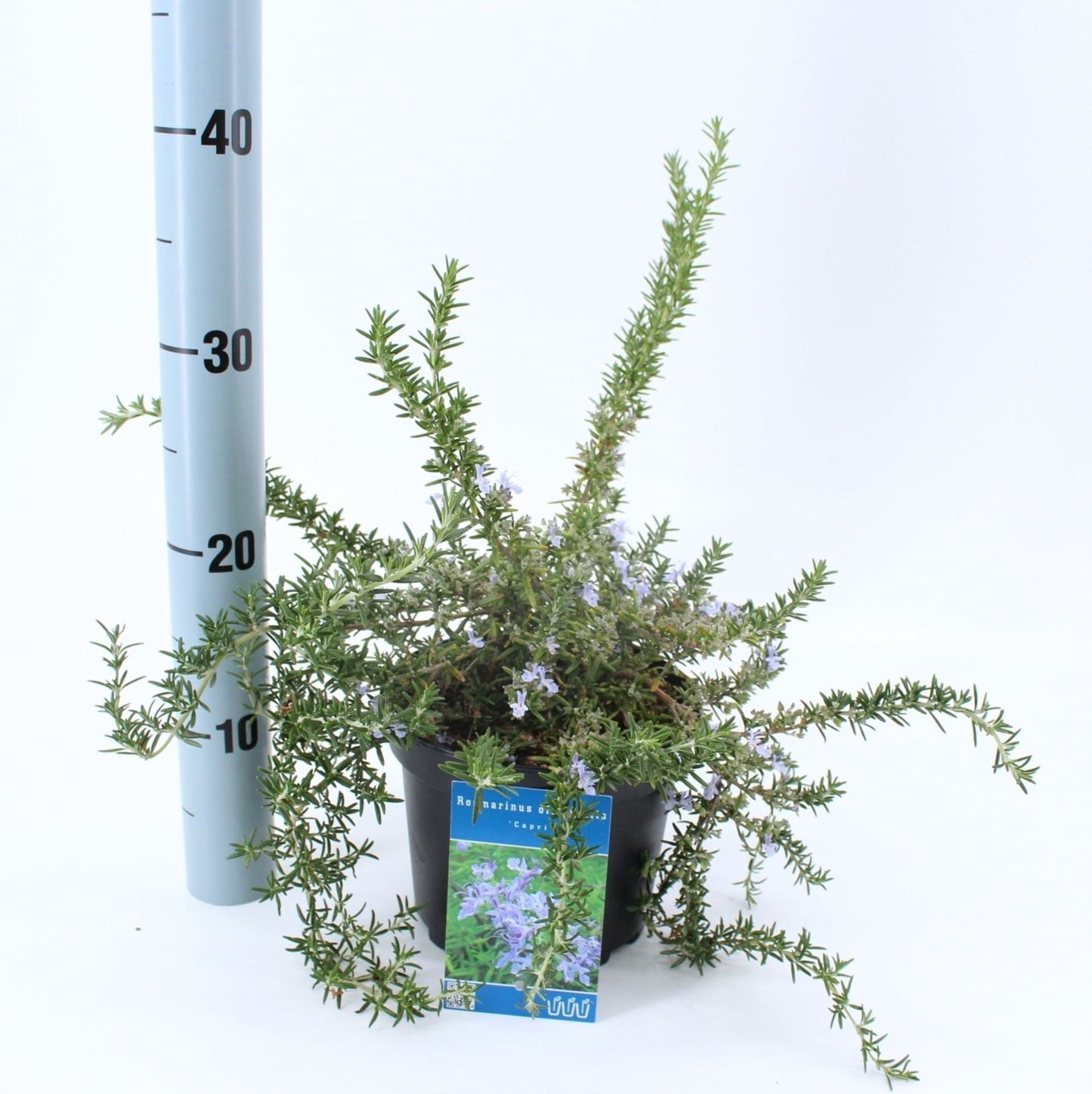روزماري
روزماري
Couldn't load pickup availability
Rosmarinus officinalis capri
Growing Rosmarinus officinalis ‘Capri,’ commonly known as trailing rosemary, involves providing the right conditions for this herb to thrive. Here’s a concise guide on how to grow it:
1. Climate: ‘Capri’ rosemary is well-suited for zones 8-10. It prefers a Mediterranean-like climate with warm temperatures and well-drained soil.
2. Sunlight: Plant in a location that receives full sunlight. Rosemary thrives in bright sunlight and requires at least 6 hours of direct sun daily.
3. Soil: Provide well-draining soil with a slightly acidic to neutral pH. Sandy or loamy soils work well for rosemary. Good drainage is essential to prevent root rot.
4. Planting: Plant in the spring when the soil has warmed up. Space the plants about 2 to 3 feet apart to allow for their trailing growth. Ensure the top of the root ball is level with the soil surface.
5. Watering: Rosemary prefers slightly drier conditions. Water deeply but infrequently, allowing the soil to dry out between watering sessions. Avoid waterlogged soil.
6. Fertilization: Rosemary doesn’t require heavy fertilization. A light application of a balanced fertilizer in the spring is usually sufficient.
7. Mulching: Apply a layer of organic mulch around the plants to retain soil moisture and suppress weeds. Keep the mulch away from the base of the plant to prevent stem rot.
8. Pruning: Prune rosemary regularly to maintain its shape and encourage bushier growth. You can also harvest the leaves for culinary use. Pruning helps prevent the plant from becoming too woody.
9. Harvesting: Harvest rosemary leaves as needed for culinary purposes. The essential oils are most concentrated in the morning, so that’s an ideal time for harvesting.
10. Pest and Disease Control: Rosemary is generally resistant to pests and diseases. However, you may occasionally encounter issues like spider mites or powdery mildew. Treat as needed with appropriate controls.
11. Winter Care: ‘Capri’ rosemary is relatively hardy, but in colder climates, it may benefit from protection during winter. Consider providing a layer of mulch around the base to insulate the roots.
12. Container Growing: Trailing rosemary can be grown in containers, making it suitable for hanging baskets or cascading over the edges of pots. Ensure the container has drainage holes.
Remember to adapt these guidelines based on your specific growing conditions and local climate. Trailing rosemary is not only a functional herb but also an attractive addition to gardens and containers with its cascading growth habit.
Share







